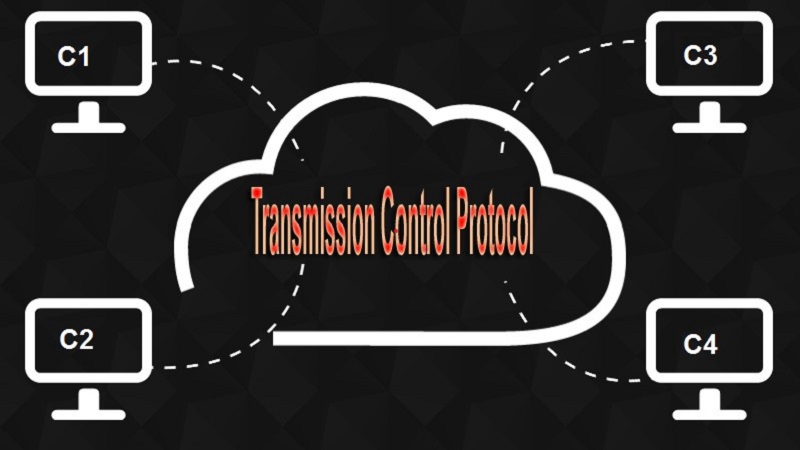What is TCP (Transmission Control Protocol)?
Definition: TCP stands for “Transmission Control Protocol” that is a communication standard that helps to enables of application programs. Along with, exchange the messages in between the multiple computing devices over the computer network.
The main aim to introduce of TCP is to send packets over the internet and to get ensure delivering of data and messages over the entire network with successfully.
TCP (Transmission Control Protocol) is a simply basic standard that defined by the Internet Engineering Task Force (IETF). It plays the major role for making communication in digital network and to get ensure end to end delivery.
What TCP is Used For?
TCP allows to gather all data that can transmit in between the server and client. Before getting to transmit data, it built a connection in between the source and its target destination point.
TCP enables to guarantees the integrity of data transfer over the network, regardless of the amount of data. Due to this, main objective of TCP is to send data from higher-level protocols that need all transmitted data to arrive.
For Examples –
HTTP: For getting to access the web pages.
Simple Mail Transfer Protocol (SMTP), Post Office Protocol (POP), Internet Message Access Protocol (IMAP): They help to send and receive the email.
Secure Shell (SSH), File Transfer Protocol (FTP), and Telnet: For getting to peer to peer file sharing, and Telnet allows to login remotely computer system to access file.
How Does TCP Work?
Here, we will explain the working of TCP (Transmission Control Protocol) along with their five phases; below explain each one:
Phase 1: Build Connection
When two computer systems want to transfer data with each other over the TCP. Then, they first require building a connection with using of “Three-way handshake“
Firstly, computer fires a packet along with SYN (synchronize) bit set to 1. And, then second computer moves back a packet along with the ACK (acknowledge) bit set 1 plus SYN bit set to 1. Then finally first computer replies back to a ACK.
Phase 2: Send Packets of Data
When packet of data get transfer over the TCP, then recipient must be always acknowledge what they grabbed.
Firstly computer fires the packet along with data and sequence number. Then, second computer acknowledges its by setting the ACK bit and enhancing the acknowledgement number by length of grabbing data.
TCP header contains the both sequence and acknowledgement numbers.
These numbers help out to computer systems for keeping track of which data received successfully, and which data was getting damage.
Phase 3: Close Connection
The computer can close the connection when they have no longer need to send or receive data.
Computer takes the initiates for closing the connection with sending a packet FIN bit set to 1. And. then other computer replies along with ACK and another FIN. And finally, connection is closed by one more ACK from initiating computer.
Phase 4: Detecting Lost Packets
TCP connections are capable to detect the lost packets with using of timeout.
Sender gets to start a timer and sends the packet in the retransmission queue. If the timer runs out and the sender has not yet received an ACK from the recipient, it sends the packet again.
Phase 5: Managing Out of Order Packets
TCP connections have ability to detect the out of order packets with using of sequence and acknowledgement numbers.
On the off chance that, recipient sees a higher succession number than what they have recognized up until now. They realize that they are absent somewhere around one bundle in the middle. In the circumstance presented over, the beneficiary sees a succession number of #73 yet expected a grouping number of #37.
The beneficiary tells the sender there’s a wrong thing by sending a parcel with an affirmation number set to the normal grouping number.
Functions of TCP
There are many basic operations which can be simplifying by their primary functions. Below explain five main tasks that performed by TCP.
Also Read: Data Center Architecture with its Examples, Types & Components
Addressing/Multiplexing: Several kinds of applications use the TCP in their transport protocols. In the TCP, UDP plays major role for multiplexing data received from their various processes. This is because; they can be easily transferring using the underlying network-layer protocol. And, these higher layer application processes allow to identify with the help of TCP ports.
Data Handling and Packaging: TCP has standard by which applications are capable to transfer data to it from higher layer, and this data is send as packaged into messages form to destination TCP software program. The destination software gets to unpackaged the data and provides it to the application over the destination point.
Data Transfer: TCP plays the major role for transmitting devices for sending the packaged data to the TCP process on another device. TCP software helps to send data packets to the underlying network layer protocol.
Connection Establishment, Management and Termination: TCP offers the group of procedures that all devices follow to negotiate and establish a TCP connection over which data can transmit. Once opened, TCP enables logic for handling connections and controlling the all issues that may result with them.
Providing Flow Control and Congestion Avoidance Features: TCP allows to flow the data in between two devices to be managing. And, it also enables features to deal along with congestion that may experience during communication between devices.
Providing Reliability and Transmission Quality Services: TCP enables a group of services and features that allows to all applications which consider to send data with using of protocol to be reliable. That means it does not have to worry about for sending data and never showing up or reaching in the wrong order.




